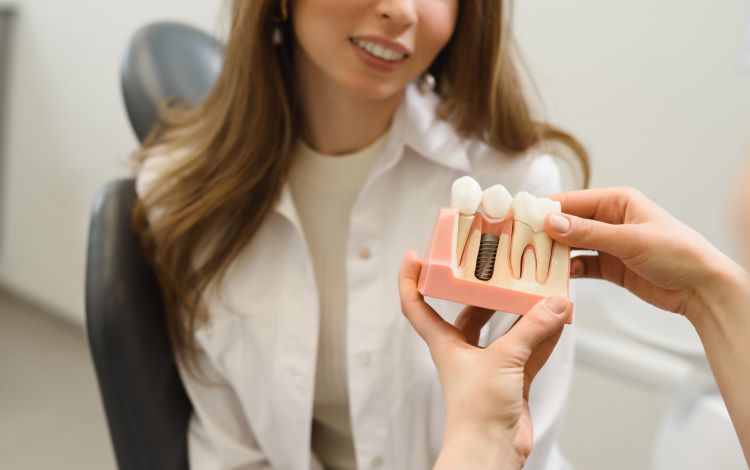Full Mouth Dental Implants Cost Overview in Australia 2025
Getting full mouth dental implants in Australia can be a significant investment, but it’s one that restores both function and confidence. In 2025, costs vary depending on factors like the number of implants, the type of materials used, and the complexity of the procedure. Understanding the price range, financing options, and what is included in the treatment can help you plan effectively and make informed decisions for your oral health.

Understanding Full Mouth Dental Implants Cost Components in Australia
The total cost of full mouth dental implants encompasses several distinct elements that contribute to the final treatment price. The implant fixtures themselves typically represent the foundation cost, with titanium posts serving as artificial tooth roots. These range from standard implants to premium options with advanced surface treatments designed to promote faster healing and integration.
Surgical procedures form another significant component, including tooth extractions if necessary, bone grafting when insufficient bone density exists, and the actual implant placement surgery. Laboratory fees for custom-designed prosthetic teeth add to the overall expense, as each restoration must be precisely crafted to match the patient’s facial structure and bite requirements.
Diagnostic procedures, including detailed CT scans and comprehensive treatment planning, contribute to upfront costs but ensure optimal placement and long-term success. Anaesthesia fees, whether local or general depending on the complexity and patient preferences, also factor into the total investment.
Key Factors That Influence the Cost of Full Mouth Implants
Several variables significantly impact the final cost of full mouth dental implant treatment across Australia. Geographic location plays a substantial role, with metropolitan areas like Sydney and Melbourne typically commanding higher fees than regional centres due to overhead costs and market demand.
The number of implants required varies between treatment approaches. All-on-4 systems use four strategically placed implants per arch, while traditional approaches might require six to eight implants per jaw. The chosen technique directly affects both implant costs and surgical complexity.
Bone quality and quantity influence treatment complexity and duration. Patients requiring extensive bone grafting or sinus lift procedures face additional costs and extended treatment timelines. Pre-existing medical conditions or medications that affect healing may necessitate specialised protocols, impacting overall expenses.
The experience and qualifications of the treating specialist also influence pricing structures. Oral surgeons and prosthodontists with extensive implant training typically charge premium fees but may offer better long-term outcomes and reduced complication rates.
Comprehensive Pricing Breakdown for Australian Patients
| Treatment Type | Provider Category | Cost Estimation (AUD) |
|---|---|---|
| All-on-4 Single Arch | Metropolitan Specialist | $20,000 - $35,000 |
| All-on-4 Full Mouth | Regional Practice | $35,000 - $55,000 |
| Traditional Full Mouth | Premium Clinic | $45,000 - $80,000 |
| Hybrid Denture System | General Practice | $25,000 - $45,000 |
Prices, rates, or cost estimates mentioned in this article are based on the latest available information but may change over time. Independent research is advised before making financial decisions.
Material selection significantly affects pricing, with zirconia prosthetics commanding higher fees than acrylic alternatives due to superior durability and aesthetics. Immediate loading protocols, where temporary teeth are attached on the same day as implant placement, may increase initial costs but reduce overall treatment time and temporary restoration expenses.
Available Financing and Payment Options in 2025 Australia
Australian patients have access to various financing solutions to manage the substantial investment required for full mouth dental implants. Private health insurance with major dental coverage may contribute towards implant treatment, though coverage levels and waiting periods vary significantly between policies and providers.
Payment plans offered directly by dental practices allow patients to spread costs over extended periods, typically ranging from 12 to 60 months. Many practices partner with third-party financing companies that specialise in medical and dental treatments, offering competitive interest rates and flexible repayment terms.
Some patients utilise superannuation funds for dental treatment under specific hardship or medical conditions, though strict eligibility criteria apply. Tax deductions may be available for dental expenses exceeding certain thresholds, providing partial cost relief for eligible taxpayers.
Credit options including personal loans, medical loans, and healthcare-specific credit cards provide immediate treatment access with structured repayment schedules. Interest rates and terms vary considerably, making careful comparison essential before committing to any financing arrangement.
Long-term Value Considerations
While the initial investment in full mouth dental implants appears substantial, the long-term value proposition often justifies the expense when compared to alternative treatments. Traditional dentures require regular adjustments, relines, and eventual replacement every 5-7 years, creating ongoing costs throughout a patient’s lifetime.
Implant-supported restorations typically last 15-25 years with proper maintenance, potentially making them more cost-effective over extended periods. The improved quality of life, including restored chewing function, enhanced speech clarity, and increased confidence, adds intangible value that many patients consider invaluable.
Maintenance costs for implant restorations remain relatively modest, primarily involving regular professional cleanings and potential prosthetic adjustments or repairs. This contrasts favourably with the ongoing expenses associated with conventional removable dentures and their related products.
Full mouth dental implants in Australia represent a significant financial commitment that requires careful consideration of multiple cost factors and financing options. While initial expenses range considerably based on treatment complexity, geographic location, and chosen providers, the long-term benefits often justify the investment for suitable candidates. Prospective patients should obtain detailed treatment estimates from qualified specialists and explore available financing options to make informed decisions about this life-changing dental treatment.
This article is for informational purposes only and should not be considered medical advice. Please consult a qualified healthcare professional for personalized guidance and treatment.




